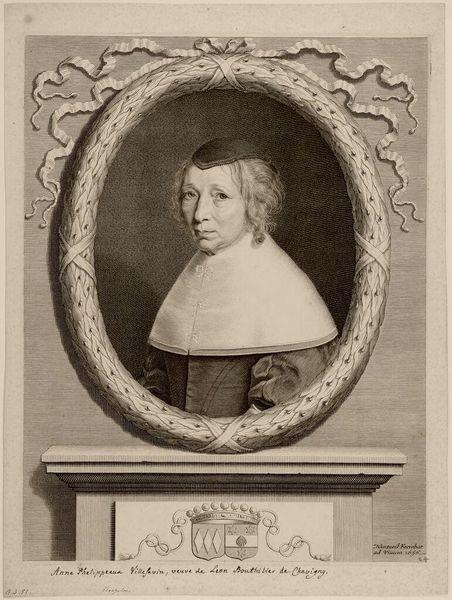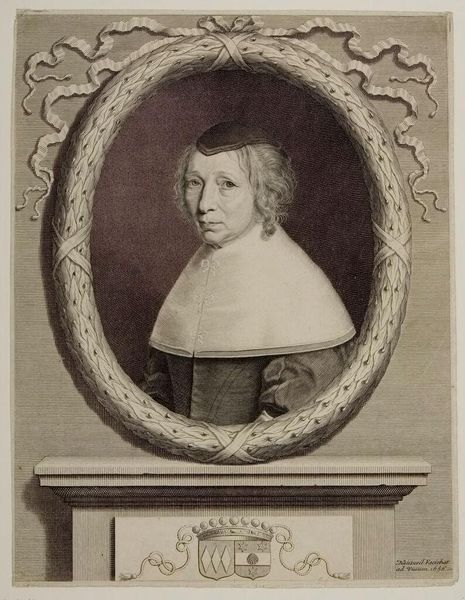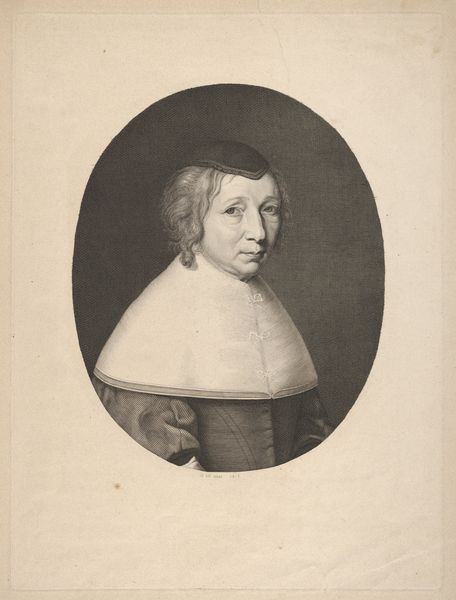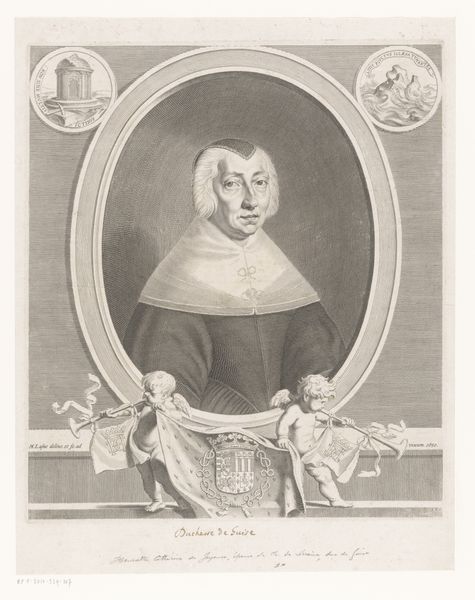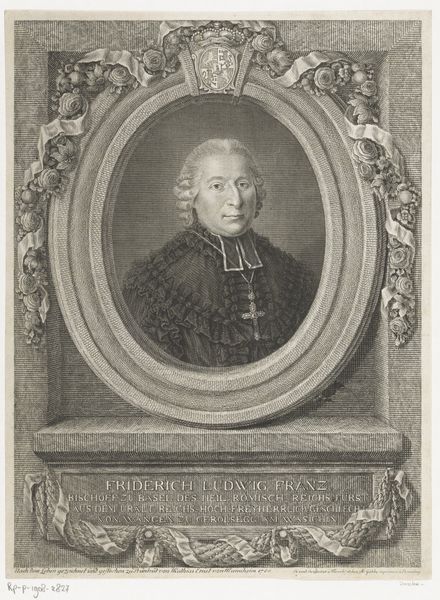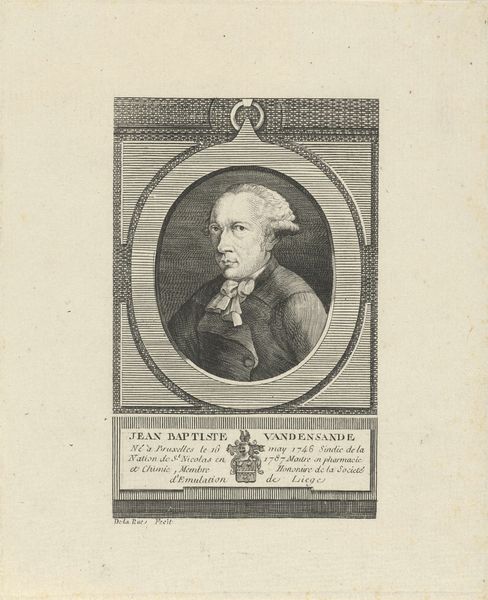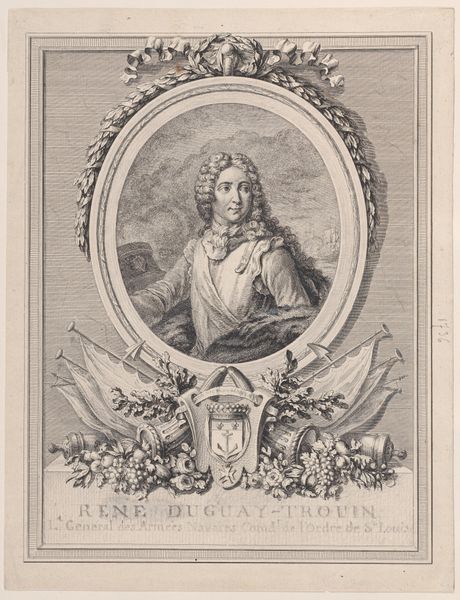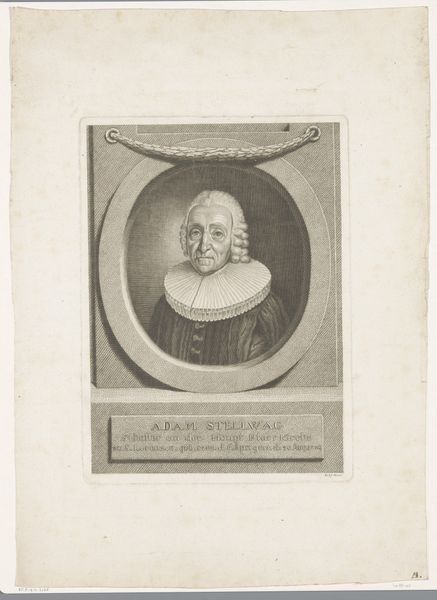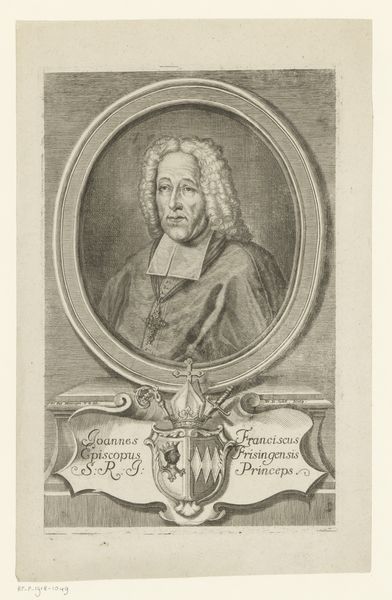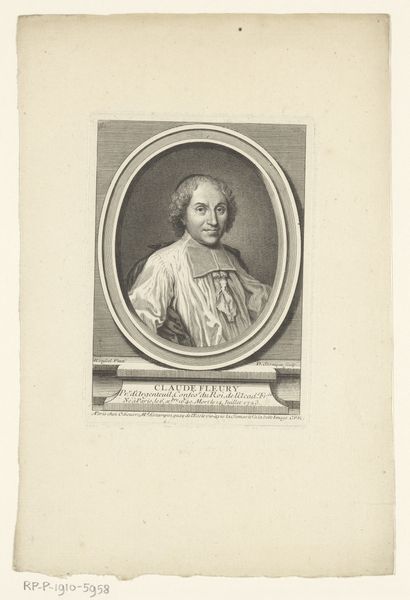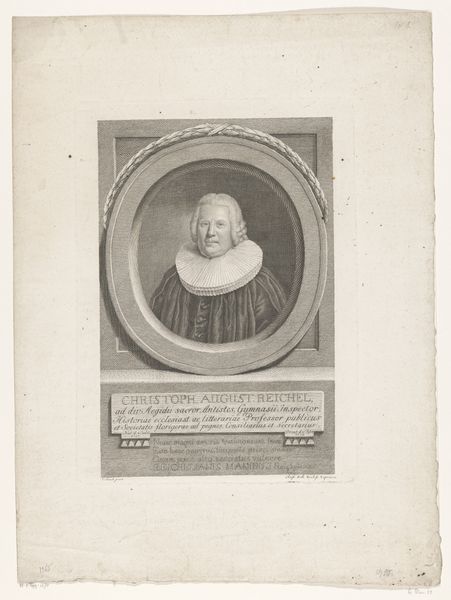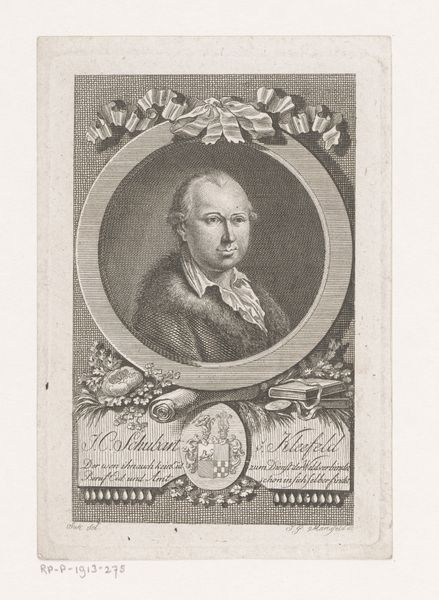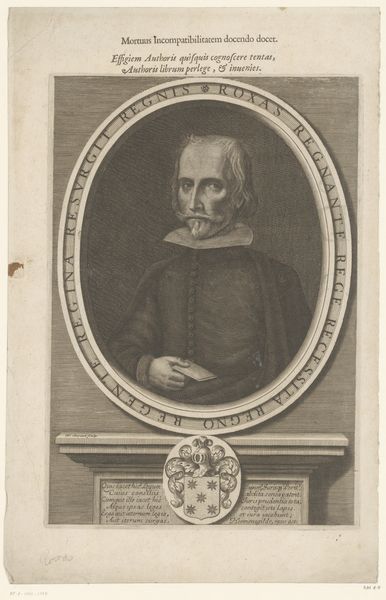
Madame Bouthillier (Marie de Bragelogne) 1651 - 1661
0:00
0:00
drawing, print
#
portrait
#
drawing
#
baroque
# print
Dimensions: Sheet: 13 11/16 × 10 1/2 in. (34.7 × 26.7 cm)
Copyright: Public Domain
Curator: This is a portrait of Madame Bouthillier, or Marie de Bragelogne, made between 1651 and 1661 by Robert Nanteuil. It’s currently housed at the Metropolitan Museum of Art. The work is a print. Editor: It strikes me as rather solemn, despite the decorative oval frame around the subject. She almost seems surprised to be captured, a little unwilling. Do you sense that tension? Curator: Absolutely. Nanteuil's prints, especially his portraits, were made through engraving, often on copperplates. He'd create these incredibly detailed lines, all these small marks adding up to form the image and suggest a depth. Consider how this was crucial for the rising merchant classes and their access to disseminating art works, fashion, and new ideas! Editor: Thinking about the practical aspects draws me in. The level of skill required to get such nuanced shades with just lines! You know, it’s amazing how a print, ostensibly reproducible, can feel so…intimate? Is it just me, or does that fine work bring the textures to life? I mean, look at that crisp white fabric of her collar—and just try not to imagine touching it. Curator: The collar really accentuates her position. The social semiotics are clear: high-quality fabrics indicate wealth and status, especially in Baroque portraiture. And these would have served very practical social functions in shaping public perception of that social status and her connections, which is further reflected in the frame with her coat of arms below the portrait. Editor: Right, the arms sort of discreetly placed... Still, though, even understanding the print as an accessible commodity—seeing it reproduced for wider circles–doesn’t dim its peculiar, personal vibe. The more I consider those textures, the set of her eyes, it almost transforms from record into a secret held. Curator: It's quite clever how Nanteuil manages to capture both. In a period that emphasized spectacle, the work is also indicative of emergent industrial possibilities afforded through material culture and reproducible media. Editor: So much is folded into it—the individual, a life being lived, and something more extensive. It feels really precious somehow, almost like uncovering the face of the past with just a touch of ink and paper.
Comments
No comments
Be the first to comment and join the conversation on the ultimate creative platform.
